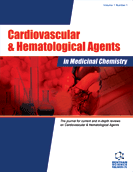Abstract
Apoptosis signal-regulating kinase 1 (ASK1) is among the signaling events that lead to postischemic cell death. Inhibition of ASK1 pathway protected hearts from ischemic damage. The present study evaluated the renal protective effects of NQDI 1, an inhibitor of ASK1, in an animal model of acute ischemic renal failure. Male Wistar rats were subjected to right nephrectomy and clamping of left renal pedicle for 45 min, or sham operation. The administration of NQDI 1 attenuated renal dysfunction and histological changes characteristic for renal ischemia/reperfusion injury (IRI). Apoptosis of renal tissues, as detected by TUNEL staining, was also reduced together with p53 protein expression, and renal levels of MDA and SOD with NQDI 1 administration and BCL2 was up regulated. In conclusion, inhibition of ASK1 is of therapeutic potential against acute ischemic renal injury. Its protective effects are mediated via inhibition of apoptosis and oxidative stress.
Keywords: Acute kidney disease, apoptosis, ASK1, Bcl-2, oxidative stress, p53, renal ischemia reperfusion injury
Cardiovascular & Hematological Agents in Medicinal Chemistry
Title:NQDI 1, An Inhibitor of ASK1 Attenuates Acute Ischemic Renal Injury by Modulating Oxidative Stress and Cell Death
Volume: 11 Issue: 3
Author(s): Eman El Eter
Affiliation:
Keywords: Acute kidney disease, apoptosis, ASK1, Bcl-2, oxidative stress, p53, renal ischemia reperfusion injury
Abstract: Apoptosis signal-regulating kinase 1 (ASK1) is among the signaling events that lead to postischemic cell death. Inhibition of ASK1 pathway protected hearts from ischemic damage. The present study evaluated the renal protective effects of NQDI 1, an inhibitor of ASK1, in an animal model of acute ischemic renal failure. Male Wistar rats were subjected to right nephrectomy and clamping of left renal pedicle for 45 min, or sham operation. The administration of NQDI 1 attenuated renal dysfunction and histological changes characteristic for renal ischemia/reperfusion injury (IRI). Apoptosis of renal tissues, as detected by TUNEL staining, was also reduced together with p53 protein expression, and renal levels of MDA and SOD with NQDI 1 administration and BCL2 was up regulated. In conclusion, inhibition of ASK1 is of therapeutic potential against acute ischemic renal injury. Its protective effects are mediated via inhibition of apoptosis and oxidative stress.
Export Options
About this article
Cite this article as:
Eter El Eman, NQDI 1, An Inhibitor of ASK1 Attenuates Acute Ischemic Renal Injury by Modulating Oxidative Stress and Cell Death, Cardiovascular & Hematological Agents in Medicinal Chemistry 2013; 11 (3) . https://dx.doi.org/10.2174/18715257113119990085
| DOI https://dx.doi.org/10.2174/18715257113119990085 |
Print ISSN 1871-5257 |
| Publisher Name Bentham Science Publisher |
Online ISSN 1875-6182 |
 65
65
- Author Guidelines
- Bentham Author Support Services (BASS)
- Graphical Abstracts
- Fabricating and Stating False Information
- Research Misconduct
- Post Publication Discussions and Corrections
- Publishing Ethics and Rectitude
- Increase Visibility of Your Article
- Archiving Policies
- Peer Review Workflow
- Order Your Article Before Print
- Promote Your Article
- Manuscript Transfer Facility
- Editorial Policies
- Allegations from Whistleblowers
Related Articles
-
Brain Inflammation Following Intracerebral Hemorrhage
Current Neuropharmacology Inhibitors of Nitric Oxide Synthase: What's up and What's Next?
Current Enzyme Inhibition Oxidative Stress: Apoptosis in Neuronal Injury
Current Alzheimer Research Cell-Based Therapy to Promote Angiogenesis in the Brain Following Ischemic Damage
Current Vascular Pharmacology Beneficial Effects of Statins on Endothelial Dysfunction and Vascular Stiffness
Current Vascular Pharmacology Ventilation During Pediatric CPR
Current Pediatric Reviews Inflammatory Mediators and the Failing Heart: A Translational Approach
Current Molecular Medicine Crocetin: an Agent Derived from Saffron for Prevention and Therapy for Cancer
Current Pharmaceutical Biotechnology Innovative Therapeutic Potential of Cannabinoid Receptors as Targets in Alzheimer’s Disease and Less Well-Known Diseases
Current Medicinal Chemistry A Novel Multi-Target Drug Screening Strategy Directed Against Key Proteins of DAPk Family
Combinatorial Chemistry & High Throughput Screening Dichotomous Life of DNA Binding High Mobility Group Box1 Protein in Human Health and Disease
Current Protein & Peptide Science Calcium Homeostasis and Kinetics in Heart Failure
Medicinal Chemistry Catalpol: A Potential Therapeutic for Neurodegenerative Diseases
Current Medicinal Chemistry Effect of Human Umbilical Cord Blood Progenitor Cells Versus Mononuclear Cells on Acute Renal Failure Rat Model
Current Stem Cell Research & Therapy Evidence of Redox Unbalance in Post-Acute Ischemic Stroke Patients
Current Neurovascular Research Patent Selections
Recent Patents on Cardiovascular Drug Discovery Antioxidant Therapy in Critically Septic Patients
Current Drug Targets Retracted: Tocotrienols and its Role in Cardiovascular Health- a Lead for Drug Design
Current Pharmaceutical Design Mitochondria-Targeted Antioxidant Peptide SS31 Protects the Retinas of Diabetic Rats
Current Molecular Medicine The Role of Melatonin in Multiple Sclerosis, Huntington's Disease and Cerebral Ischemia
CNS & Neurological Disorders - Drug Targets


























